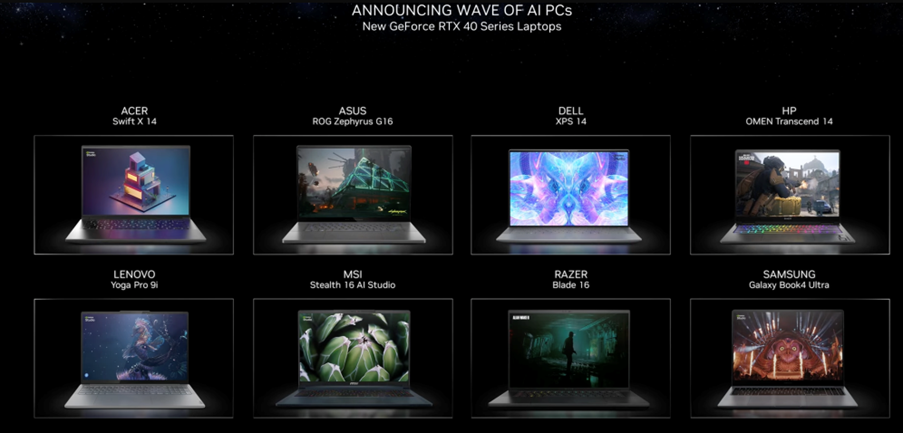At CES 2024, Nvidia is focusing on generative AI—from new GenAI-powered innovations for PCs in gaming and content creation, to new RTX desktop GPUs supercharged with GenAI capabilities. Nvidia is showcasing concrete examples of GenAI, including Getty Images’ just-announced Generative AI by iStock, a commercially safe, copyright-protected image generation solution built on Nvidia’s Picasso. On the gaming front, Nvidia introduced ACE microservices for AI game characters, in addition to upcoming GeForce RTX game titles and more. In terms of GPUs, there’s new Super series, which offer a small performance increase at a lower price, with the GeForce RTX 40 Super series GPUs delivering enhanced gaming performance. Also, TensorRT software and partner RTX 40 laptops were announced.
What do we think? The GenAI hype is surprisingly restrained from Nvidia, with concrete examples or use cases for pretty much every claim. Some of them, such as Getty seeking to solve your AI image copyright woes, are quite significant.
As for the new GPUs: The pricing issues an immediate challenge to AMD’s Radeon RX 7900 XT and XTX cards. It looks like buyers of those cards are the target for the RTX 4080 Super, which offers only a small bump in performance compared to the RTX 4080. No need to upgrade, but if you haven’t bought an RTX 4080, you are in luck—this is essentially a $200 price drop.
Gaming GPUs amplified with more performance and GenAI capabilities, but first, here’s what is happening on PCs with GenAI
“GenAI presents an opportunity far larger than the Internet,” said Jeff Fisher, senior VP, GeForce, at the very start of CES 2024. He might be right, but the examples given on the opening morning of the show are relatively straightforward productivity tools.
Perhaps more telling was Fisher’s revelation that “seven out of every eight pixels are generated by AI.” That’s a massive revolution and a major win for Nvidia, which has led the AI charge for a decade.
Today, Nvidia is proposing a hybrid generative AI model where large LLMs run in the cloud and latency-sensitive applications run on the PC. Current applications—such as virtual backgrounds in conferencing—aren’t very exciting, but more interesting apps will come. In fact, Nvidia pointed to Adobe, which is combining cloud and local AI in their tools.
It’s not the only one that does so. Nvidia’s most interesting CES demo was ACE for AI game characters, which was teased at Computex in June 2023 when Nvidia introduced its Avatar Cloud Engine (ACE) for Games. ACE brings digital avatars to life with generative AI, infusing intelligence on non-player characters (NPCs) including the ability to intelligently converse. ACE models can run in the cloud or locally on the PC.
At CES, Nvidia introduced ACE production microservices, which deliver models that developers can use in their own pipeline to add generative AI models to their game’s avatars. Convai is an initial partner for “real-time character-to-character interactions” and whose impressive early use of the technology appeared in an eye-catching demo when ACE was initially announced. At CES, Convai’s expanded Kairos demo containing new features and ACE microservices, continued to turn heads. Basically, the world (at least while observed by the player) contains AI-generated and unique NPC interactions, and the conversation is different every time. In the demo, the player could interact directly with the NPCs via speech recognition, and this time around, the NPCs are able to converse with one another.
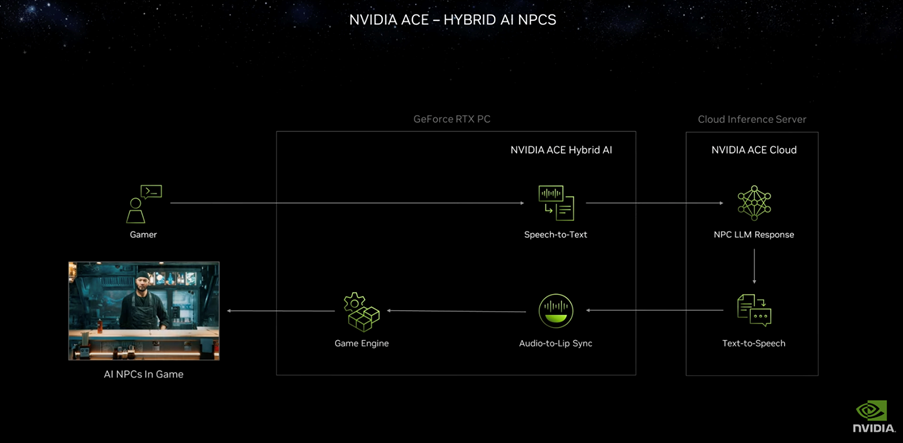
And characters are not the only aspect of gaming reaping revolutionary benefits from generative AI. Today, Nvidia says, there are more than 500 RTX titles using a range of DLSS 3 AI performance boosts, DLSS AI-enhanced image quality, and Nvidia Reflex low-latency technology.
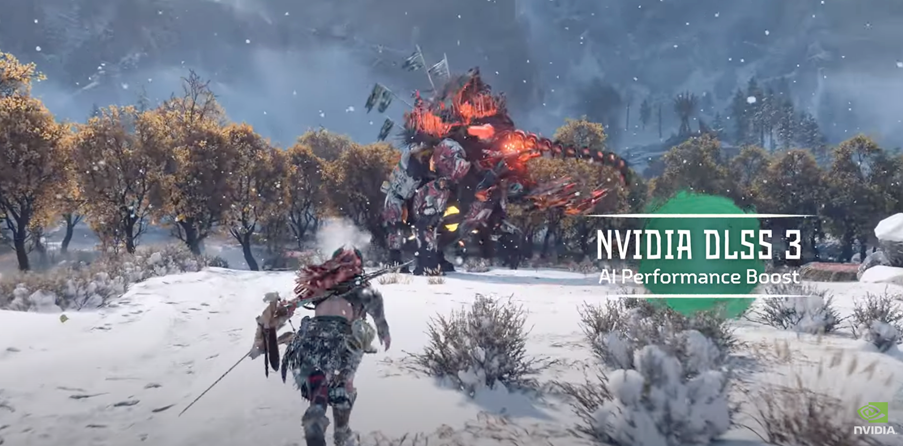
Titles highlighted at CES include Pax Dei, an MMO with high levels of user creation, and Diablo IV, which was announced with ray tracing.
For cloud gamers, GeForce Now is some new features, including the integration of G-Sync. In addition, the company is offering Priority and Ultimate day pass memberships with “fastest access” guarantees for $3.99 and $7.99, respectively.
RTX Remix, Nvidia’s free modding platform, enables remastering of classic games using RTX, providing full ray tracing, DLSS, Reflex, and GenAI texture tools. On January 22, 2024, Nvidia will release the RTX Remix open beta. Half-Life 2 RTX is an initial game using the framework.
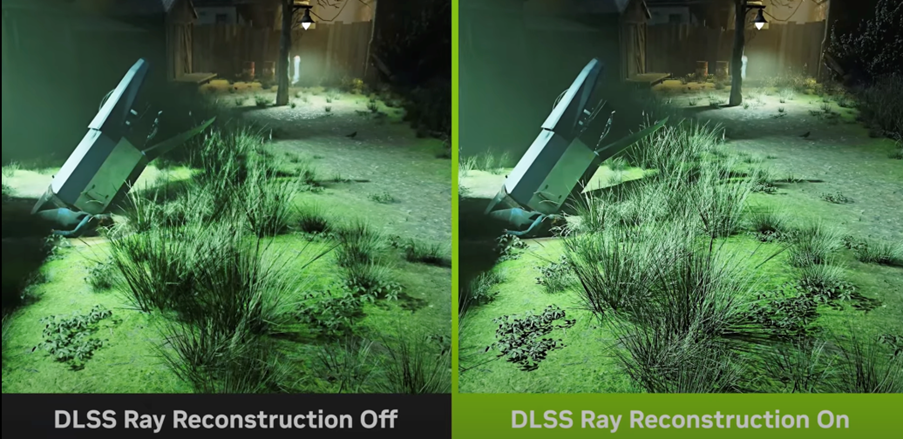
For games, AI-powered DLSS provides greater in-game immersion. Outside of the gaming realm, Generative AI applications like Adobe Photoshop take advantage of Tensor cores to speed productivity and keep creative workflows moving. Within the creation realm, iStock from Getty Images is releasing a generative AI service built on Nvidia Picasso. This lets anyone create a 4K image from text. The resulting images are licensed and commercially safe because they are created using AI trained only on the Getty Images catalog. The service is available today.

And, GPUs!
Of course, Nvidia also announced new GPUs, the Super series. They are gaming GPUs amplified with more performance and generative AI capabilities, ranging in price from $599 to $999. They represent a small performance increase from the last gen but at a much more substantial price drop.
Included within the GeForce RTX 40 Super series family of GPUs are the GeForce RTX 4080 Super, GeForce RTX 4070 Ti Super, and GeForce RTX 4070 Super. According to Nvidia, this latest iteration of Ada Lovelace architecture-based GPUs delivers up to 52 shader TFLOPS, 121 RT TFLOPS, and 836 AI TOPS. Pricing for the GeForce RTX 4070 Super starts at $599.
Matt Wuebbling, vice president of global GeForce marketing at Nvidia, said: “GeForce RTX Super cards support over 500 RTX games and applications, and will have users prepared for the wave of generative AI apps coming to PC.”
4K gaming: The GeForce RTX 4080 Super
The GeForce RTX 4080 Super powers fully ray-traced games in 4K resolution. At 1.4× faster than the GeForce RTX 3080 Ti without DLSS Frame Generation, the RTX 4080 Super delivers great performance with traditional rasterization. With 836 AI TOPS, DLSS Frame Generation delivers an extra performance boost, making the RTX 4080 Super twice as fast as the RTX 3080 Ti, Nvidia says. The RTX 4080 Super features more cores and faster memory for a performance edge. In AI workloads, the GeForce RTX 4080 Super generates video over 1.5× faster and images over 1.7× faster than the RTX 3080 Ti. It will be available starting January 31, 2024, starting at $999.
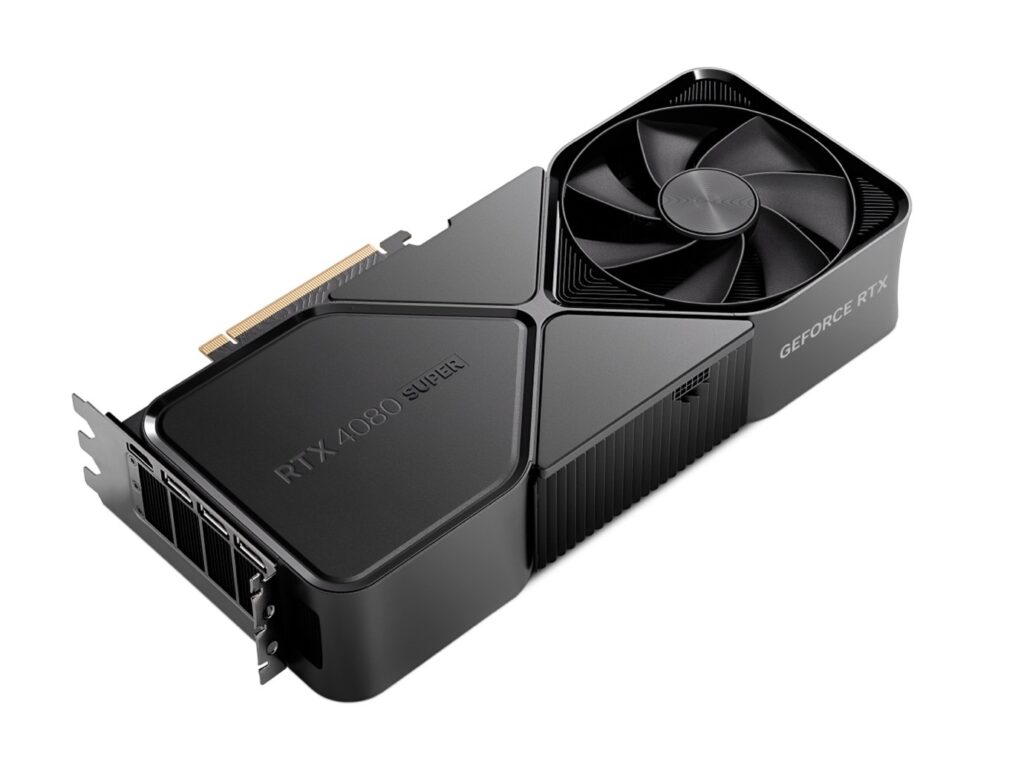
Precision gaming: The GeForce RTX 4070 Ti Super
The RTX 4070 Ti Super is designed for maxing out games at super high frame rates at 1440p (and up to 4K, maybe). Compared to the RTX 4070 Ti, it has more cores, an increased frame buffer to 16GB, and a 256-bit memory bus, providing a memory bandwidth increase to 672 GB/sec. It is 1.6× faster than an RTX 3070 Ti and 2.5× with DLSS 3. The GeForce RTX 4070 Ti Super will be available starting January 24, 2024, at $799.
Entry level: The GeForce RTX 4070 Super
The RTX 4070 Super arrives with 20% more cores than the RTX 4070, making it faster than an RTX 3090 at a fraction of the power. With DLSS 3, it stretches to a claimed 1.5× faster. It will be available starting January 17, 2024, at $599.
Along with those GPUs, Nvidia is offering Nvidia TensorRT software delivering high-performance deep learning inference, which includes a deep learning inference optimizer and runtime that delivers low latency and high throughput for inference applications. The TensorRT-LLM for Windows is an open-source library that accelerates inference performance for the latest large language models.
Rounding out the Nvidia announcements are a wave of RTX 40 laptops from most major OEMS.
